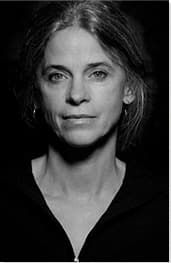Summary of Sally Mann
Despite a career that has been mired in controversy, Mann remains one of America's premier living photographers. She is both revered and reviled for her unabashedly sensuous portraits of pre-pubescent girls and a series of naked portraits of her own children. While these works remain the pieces for which she will always be best known, Mann's oeuvre is expansive and encompasses themes including landscapeture that touches on the difficult history of the Southern American states, and works that confront the taboo of death, including post-mortem human bodies in various states of decomposition. The recipient of countless professional honors and awards, Mann has achieved international fame without ever abandoning her rural Virginia roots.
Accomplishments
- Mann properly announced herself to the contemporary artworld with a portfolio entitled At Twelve: Portraits of Young Women (1988). It comprised of a series of provocative portraits of twelve-year-old girls - girls on the cusp of sexuality - living in and around the artist's hometown of Lexington, Virginia. The collection would become iconic, but at the same time Mann's portraits drew widespread condemnation from religious and conservative groups who accused her of the sexual exploitation of children.
- Mann's family portraiture was born of a simple desire to chronicle the formative years of her own children. Brought up in a rural household, by bohemian parents whose relaxed attitude towards nudity saw Mann and her siblings playing in the family's farmyard completely unclothed, she thought nothing of photographing her own children naked or in stages of undress. Her collection Immediate Family (1992) would become a benchmark in family portraiture, but, as with At Twelve: Portraits of Young Women, it saw Mann accused by her distractors of sexualizing minors.
- Leaving the earlier controversies behind, Mann produced a series of landscapes of Alabama, Mississippi, Virginia, and Georgia. Using antique photographic techniques that conjured a mood of nineteenth century American history, she turned her lens on sites that had been witness to some of the fiercest battles of the Civil War, and haunting landscapes that still bore the scars of slavery and the shame of lynching.
- Mann's interest in photographing death started with the passing of her pet greyhound. But it reached its high point when she worked with the "body farm" department at the University of Tennessee Forensic Facility. It was a facility in which law enforcement professionals, researchers, and students were able to study decomposing human bodies in staged woodland settings. Mann commented on how matter-of-factly her colleagues discussed the bodies and chose to treat her subjects with a similar sort of aesthetic distance - "scientific, not artsy-fartsy" - as she put it.
The Life of Sally Mann
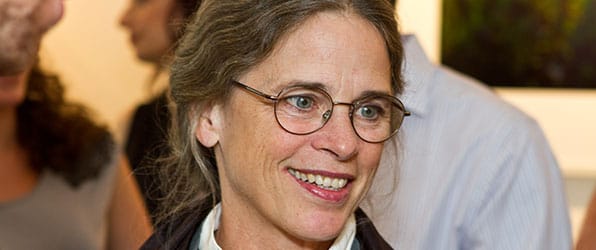
Commenting on the accusation that her pictures of children and young girls amounted to sexual exploitation, Mann stated: "It is a banal point that no artist can predict how each image will be received by each viewer, and that what is devoid of erotic meaning to one person is the stuff of another's wildest fantasies."
Important Art by Sally Mann
Damaged Child
Mann calls this image her "first good family picture". It shows her daughter Jessie (the second of her three children), who was four years old at the time, from the chest-up, against a flat blank backdrop. Unsmiling, Jessica looks at the camera, her right eye noticeably swollen. As Mann explains, the child's face was "swollen with hives from insect bites, to which she was especially sensitive [...] As soon as I printed it, I noticed its kinship with the familiar Dorothea Lange picture 'Damaged Child, Shacktown. In both, the girls have a look of battered defiance. Just in case anyone would miss it, I made sure that the title drove the comparison home".
For Mann, this image serves as a simple representation of the daily realities of parenthood "[I take pictures] of ordinary things every mother has seen. I take pictures when they are bloodied or sick or naked or angry". However, the first reaction of many viewers was that the child had been abused (an interpretation reinforced by the photograph's title). The New York Times even posted the image on the cover of its September 27, 1992, issue with the feature article "The Disturbing Photography of Sally Mann". After the article was published, Mann defended her work, "In my arrogance and certitude that everyone must see the work as I did, I left myself wide open to journalism's greatest hazard: quotations lacking context or the sense of irony or self-deprecating humor with which they were delivered".
Others jumped to Mann's defense, however. Commenting on her Immediate Family (1992) collection (in which Damaged Child featured), novelist Whitney Otto argued that Mann presents "a complex, humanist world, both romanticized and real [and that] The hue and cry over Mann's pictures - though it's lessened with time - was so gratifying to me, a woman writer with a child, because it forced the public to see, to really see as if for the first time, that home life, that domesticity, that social sphere as unsettling, and thorny, and as important as any other aspect of human experience".
Gelatin silver print - Phillips New York
Leah and Her Father
This photograph shows three adults seated around a garden table. In the background, slightly out of focus, are a young man and woman, presumably a couple. In the center foreground is a balding man (indicating his age) whose head is turned away from the camera towards the couple as if in conversation. Twelve year old Leah (a friend of Mann's own daughter, Jessie), is lounged across his lap. She leans back, her head rested on her father's shoulder, turning to look directly at Mann's camera. This image comes from Mann's early series, At Twelve: Portraits of Young Women (published in 1988), which comprised of a series of twelve-year-old girls from the artist's hometown of Lexington. Many of her subjects were delivered by Mann's own father, a local physician, so although the images do not present any of Mann's own children (who were all under the age of twelve at this time), they remain highly personal in terms of their community connections.
The series marks a turning point in Mann's career. Although it brought her fame, Mann was accused of the "eroticization" of pre-pubescent girls. In this image, for example, Leah's father holds his daughter's right buttock, which for Mann (and her supporters) was a natural and innocent enough gesture in which the father is simply supporting the weight of his daughter's slouched body. For others, however, the distasteful sexual overtones of Mann's images were palpable. A 2012 exhibition in Madrid was even titled At Twelve: The Lolitas of Sally Mann, a title that referred to the titular character of Vladimir Nabokov's notorious 1955 novel (Lolita) in which a twelve-year-old girl becomes engaged in a sexual relationship with a lodger who married her mother.
Coming to Mann's defense, the art critic Richard B. Woodward says of the collection that she "wanted to catch the tension in [the girls'] bodies, eyes and gestures as they passed into the confused state when girls become women". The novelist Ann Beatle also offered a more objective view of the images in her introduction to the book, writing, "when a girl is twelve years old, she often wants - or says she wants - less involvement with adults. [It is] a time in which the girls yearn for freedom and adults feel their own grip on things becoming a little tenuous, as they realize that they have to let their children go". This argument is reinforced here by Leah's direct gaze at the viewer which sees her turning away from her family towards the outside world.
Gelatin silver print - Philadelphia Museum of Art
The Last Time Emmett Modeled Nude
Taken in 1987, this high-contrast black and white photograph, formed part of Mann's controversial Immediate Family collection published in 1992. It shows her naked son, Emmett (then aged eight) standing waist-high in a river near the Mann family home. His hands are spread outward, skimming the surface of the water, while he looks up at his mother's camera with a sullen expression. The background is dominated by the thick forest that surrounds the river, and the reflection of the trees in the still water. As the title tells, this image is significant in Mann's oeuvre as it marks the last time her oldest child agreed to model nude for her.
In the early 1990s, various political groups and the media were concerned about growing incidences of child pornography in society. It was in this context that Immediate Family was "delegitimized", in an act of what the sociologist Jeff Ferrell called "cultural criminalization". Pat Robertson of the Christian Broadcasting Network, for instance, protested that "selling photographs of children in their nakedness for profit is an exploitation of the parental role". Other members of the public wrote to Mann suggesting that her photographs would lead to her children suffering psychological trauma, and would likely result in at least one pedophile moving to Lexington and prowl the town's streets.
Mann responded, "I didn't expect the controversy over the pictures of my children. I was just a mother photographing her children as they were growing up. I was exploring different subjects with them". Nevertheless, she treated the complaints seriously and took her children to a psychologist (who concluded that they were "well-adjusted and self-assured"), and even considered postponing the publication of the Immediate Family to "when the kids won't be living in the same bodies [and when they'll] have matured and they'll understand the implications of the pictures". But it was her children who insisted that the images should be made public. As her husband Larry noted, "The kids are aware how the pictures are received in the art world and they're proud of them". Mann did ask each child sift through the collection and remove those they were unhappy with, but the images they removed were, not the naked images, but those, in Mann's words, that made them look "like dorks".
Gelatin silver print - National Gallery of Art, Washington D.C.
Deep South, Untitled (Scarred Tree)
In the late 1990s/early 2000s, Mann turned her focus to landscape photography in the American South (covering Alabama, Mississippi, Virginia, and Georgia). In this sepia-tinted photograph, a tree stands front and center frame, with a broad, horizontal gash across its trunk. In the unfocused background, we see a wire fence, behind which lies a misty field, and still further back, a line of trees. Photographer Thomas Peck argues that in order to appreciate this image we need to consider the way in which the trees "have a unique, historical resonance, wrapped up with the difficult history of slavery that casts its shadow through the centuries to the modern day. 'Southern trees bear a strange fruit/ Blood on the leaves and blood at the root' sang Billie Holiday. And Mann's tree is scarred, torn, violated. The rupture in the bark is a wound. It has festered, calcified into the tree. The tree grows on, the wound remains, visible and not yet truly healed. It represents a terrible history of this locality which has yet to be fully absorbed and absolved".
For this series (the image formed part of her Deep South book published in 2005), Mann used the wet plate collodion process, which involves coating glass plates with a nitrocellulose solution, and dipping them in silver nitrate immediately before exposure so that they are wet at the moment of exposure. This was the dominant photographic process used in civil war battlefield photography and often results in surface distortions and blemishes. Mann embraced these flaws as they lend the images a sense of mystery, moodiness, and melancholy. As curator and art critic Lyle Rexer put it, the Deep South photographs are "swirling, ethereal" images "with a center of preternatural clarity".
Tea-toned gelatin silver print - National Gallery of Art, Washington D.C.
Untitled (Body Farm #18)
This image comes from Mann's series Body Farm (2001) and was taken at the University of Tennessee Forensic Anthropology Facility in Knoxville (which was founded in 1971 and is known colloquially as the "Body Farm"). The 2.5 acre wooded facility, surrounded by razor wire, is used by law enforcement professionals, researchers, and graduate students to study the decomposition of human bodies in various natural settings. Mann was fascinated to discover that the "Body Farm" existed. She observed, "There was something matter-of-fact about the way those bodies were laid out and how they were treated. I mean, they were a scientific experiment and very quickly I grew to see them that way, in the same way that the graduate students were working with them. So that was one of the shocking things".
Many works from this series also appeared in Mann's 2003 book, What Remains, which includes images that focus on the theme of death more broadly. Mann first began capturing images of death around the year 2000, when she documented the decaying corpse of her pet greyhound, Eva. She explains, "I have had a fascination with death that I think might be considered genetic [...] My father had the same affliction, I guess [...] I was surrounded in the household with the iconography of death [...] I picked it up by osmosis". Mann's images amount, however, to much more than a morbid fascination with death and decay. As writer Blake Morrison explains, "[Mann's point is that] death is not an end, that nature goes on doing its work long after the body has become a carapace". In the artist's own words, "Death makes us sad, but it can also make us feel more alive." Elsewhere, she has stated that "death is the fatal yet fertile mother: What devours also creates."
Mann's photographs of decomposing human bodies mostly evaded public criticism. Says Mann, "If there's any time when you're vulnerable, it's when you're dead. In life, those people had pride and privacy. I felt sorry for them. I thought if they knew I was taking photos, without them having a chance to comb their hair or put their teeth in, they'd die of shame. So I expected critics to ask: is this right?" So certain was she that this series would be criticized, she had a response prepared, in which she explained that all of the individuals had signed release forms in order to donate their bodies for scientific research. However, as she explains, "I discovered that some of the corpses were street people who hadn't signed releases. And of course even those who did sign probably thought the photos would be scientific, not artsy-fartsy. So though I was given a free hand - 'Go on,' they said, when a fresh batch arrived, 'unzip the body bags and get them out' - I decided to keep the subjects anonymous. I didn't want to aestheticize them, either. It was important to treat them with respect".
Gelatin silver print with soluvar varnish - Jackson Fine Art, Atlanta, Georgia
Ponder Heart
This photograph shows the back of the artist's husband, Larry, from the waist-up, with his right hand resting on his left shoulder. He leans back against a wet window, causing the image to be slightly out-of-focus. The image belongs to Mann's series Proud Flesh (2009). It focuses on Larry who was diagnosed with muscular dystrophy (a deterioration of muscle mass) in 2006. Mann spent the next six years documenting his body and his battle with the disease. The title of the series (Proud Flesh) refers to the medical term in the equestrian world for the intermediate layer of unsightly flesh that develops over a horse's wound in the healing process, before the final scar tissue is formed. Furthermore, the individual image titles in the book, reference a sweep of literary sources, from classical mythology and the Bible, to works of modern writers such as T. S. Eliot, Ezra Pound, and Eudora Welty.
Curator Max Weintraub notes that "Shooting in close-up as he posed nude in her largely unadorned and rustic studio, the resulting images depict fragments of Larry's naked body - and often little more - in a shallow pictorial space. The simplicity of Mann's images is balanced by her use of the wet-plate process, which adds a warm tone to the surface of the photographs and leaves a distinctive layer of residual marks, pocks and other imperfections, all of which introduce an air of delicacy and ephemerality to these nude studies. [...] Mann's wet-plate process, and its strong associations with nineteenth-century photography, imbue her photographs of her husband's body with a sense of a remote yet familiar past".
Mann observed that it is rare for female artists to focus on the nude male form: "In taking these pictures, I joined the thinly populated group of women who have looked unflinchingly at men, and who frequently have been punished for doing so [...] I can think of numberless male artists, from Bonnard to Weston to Stieglitz, who have photographed their lovers and spouses, but I have trouble finding parallel examples among my sister photographers. The act of looking appraisingly at a man, studying his body and asking to photograph him, is a brazen venture for a woman; for a male photographer, these acts are commonplace, even expected".
Gelatin silver print - National Gallery of Art, Washington D.C.
Biography of Sally Mann
Childhood
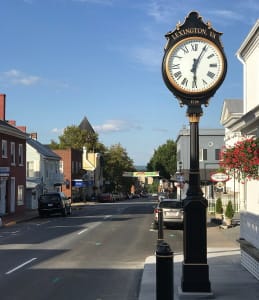
Sally Turner Munger was the youngest of three children born to Robert Munger, a doctor who drove around Lexington, Virginia in his Aston Martin (luxury British sports car) making house calls and delivering babies, and, Elizabeth Evans Munger, a bookstore manager at Washington and Lee University. Sally's primary maternal figure, however, was her nanny, an African-American woman named Virginia Carter who took day-to-day care of Sally and her siblings. She described her childhood, during which she usually played unclothed, as "'unconventional', 'rural' and 'near-feral'", adding that, we were "middle class but bohemian: no church, no country club, no television".
Having inherited his love of photography, Sally would borrow her father's 5x7 camera (which may account for her preference for large format photography in her professional career). He also bought his daughter her first Leica (35mm hand-held) camera. Art critic Richard B. Woodward explains that it was Dr. Munger "who instilled a shameless attitude toward the flesh in his daughter, photographing her nude as a girl". Unimpressed with her father's efforts, Sally later called her father's attempts at nude portraiture "terrible art".
Education and Early Training
In 1969, Sally graduated from the Putney School, a private boarding school in Vermont. While at Putney, she signed up to a photography module (though she later admitted that her primary motivation was to be able to be alone with her boyfriend in the darkroom). One of her first photographic works was a nude portrait of a classmate. She then attended Bennington College, a private liberal arts college in Bennington, Vermont, where she studied with South African photographer and filmmaker, Norman Sieff. Having met him a year earlier at Bennington, Sally took the initiative and proposed to Larry Mann, a blacksmith/trainee attorney, who was three years her senior. Sally and Larry Mann were married in 1970.
Mann studied briefly at Friends World College, a small independent liberal arts institution that later merged with Long Island University (later Friends World Program). She then enrolled at Hollins College (now Hollins University) in Roanoke, Virginia, from where she graduated with first class honors, in 1974. The following year she earned an MA in creative writing, also from Hollins. Soon after graduating a second time, Mann worked as an architectural photographer for Washington and Lee University, documenting the construction of the school's new law school building, the Lewis Hall. This led to Mann's first solo exhibition in 1977 at Washington, D.C.'s Corcoran Gallery of Art, and the publication of her, Lewis Law Portfolio (1977).
In 1979 Mann gave birth to the first of her three children. As art critic Richard B. Woodward explains, "Her solution to the demands of motherhood, which have eaten away at the schedules of artistic women throughout the ages, was ingenious: with her children as subjects, making art became a kind of childcare". Emmett (who later served in the peace keeping corps of the military) was followed, respectively, in 1981 and 1985, by two daughters, Jessie (a future artist and wife of American photographer Len Prince), and Virginia (who followed her father's career path by becoming a lawyer). Emmett suffered three significant brain injuries (the first when he was hit by a car as in childhood, and the two others resulting from accidents in adulthood) and was later diagnosed as schizophrenic. Said Mann, "We don't know if the injuries caused it, or exacerbated it, or if it was genetic".
Mature Period
Mann's first anthology, Second Sight, was published in 1984. As the Sotheby's auction house describes, "[the book] includes a variety of photographs: landscapes, portraits, platinum still life studies, and selections from her 'Lewis Law Portfolio' [that] approximate the physical characteristics of two different types of photographs: silver prints reproduced on glossy stock [and] platinum prints reproduced on matte stock". But it would be four more years before Mann gained acclaim and notoriety in equal measure with the publication of At Twelve: Portraits of Young Women (1988).
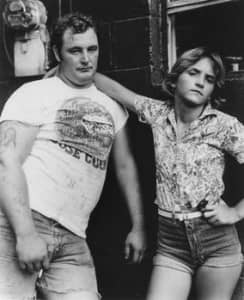
The collection featured portraits of twelve-year-old girls, taken with Mann's antique 8x10 view camera. It was an early example of Mann's preference for older photographic technologies and processes which lend her images a vintage, almost otherworldly, quality. As if anticipating the criticism that accompanied Mann's portraits, the book featured an introduction by the novelist Ann Beattie who wrote, "These girls still exist in an innocent world in which a pose is only a pose--what adults make of that pose may be the issue".
Mann's case was not helped when it emerged that one of the images in the series, Untitled (Theresa and the Tattooed Man), seemed to confirm the worries of her critics. The image shows a young girl in tight denim shorts with her arm resting on the shoulders of a large, tattooed adult. There is a palpable sense of friction between the two subjects (Mann later said how the girl refused to move any closer to the man). Indeed, a few months after the photograph was taken, it was claimed that the man, Theresa's mother's boyfriend, had been sexually abusing the girl and was duly shot in the face with a pocket pistol by the girl's mother. Theresa's mother stated in court that while she was working evening shifts at a local truck stop, her boyfriend was "at home partying and harassing my daughter" (Mann said that Theresa described the "harassment" to her "somewhat more directly"). Reflecting on the image, Mann said she looked at Theresa and the Tattooed Man with "a jaggy chill of realization".
In 1991, during an exhibition at the Milwaukee Art Museum, broadcast evangelist Rev. Vic Eliason contacted the police and the district attorney claiming that Mann was exploiting her own children by exhibiting "indecent" images of them. No legal action was taken against Mann, but Eliason's protest signaled the start of an on-going controversy in which Mann would have to defend her art against accusations of immorality and/or child pornography. Artforum refused to publish a picture of a nude Jessie swinging from a farmyard rope, and a review in The San Diego Tribune ran the headline: "It May Be Art, but What About the Kids?" The family portraits gained further notoriety when journalist Raymond Sokolov published an article in the Wall Street Journal, entitled Critique: Censoring Virginia, which was accompanied by a reproduction of a photograph of Mann's naked four-year-old daughter Virginia, but with black bars placed across her eyes, nipples, and pubic region. Commenting on the censored image, Mann said, "it felt like a mutilation, not only of the image but also of Virginia herself and of her innocence. It made her feel, for the first time, that there was something wrong not just with the pictures but with her body". Virginia, who was by now a little shy of six years old, even addressed a letter to Sokolov and his editor Daniel Henninger in which she wrote: "Dear sir, I don't like the way you crossed me out". The men apologized to Virginia personally but without retracting their criticism of her mother's art.
The controversy surrounding Mann's family portraits, which was published to acclaim as the collection, Immediate Family, in 1992, was addressed in a 1994 film, Blood Ties: The Life and Work of Sally Mann. The film was nominated for an Academy Award, Best Documentary, Short Subjects.
Sadly, in 1996 Larry was diagnosed with the muscle wasting disease, muscular dystrophy. Mann would chronicle in pictures the impact of the disease on her husband's body over the coming decade.
Late Period
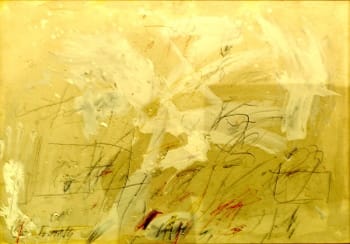
Mann was close friends with abstract artist Cy Twombly, who also lived in Lexington. They were first introduced by Mann's father, who, in the mid-1940s, invited Twombly (then a high school senior) over to dinner. Mann's parents were also early patrons of Twombly's work, purchasing one of his house-paint and pencil paintings in 1955. Between 1999 and Twombly's passing in 2011, Mann photographed the artist and his studio. Mann and Twombly also spent time together outside the studio, sitting on his favorite bench at the local Walmart (from where he could gaze at the mountains) or visiting a local Antique Mall where he enjoyed perusing kitschy objects. Mann remembers him as "one of the most urbane, sophisticated humans alive", adding that "he taught me a lot. He was so loose and free and energetic" (several of her portraits of Twombly were collected in the book Remembered Light: Cy Twombly in Lexington (2016)).
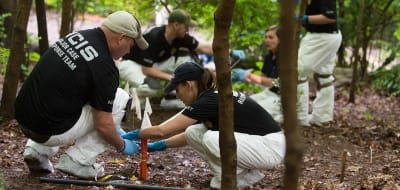
In the early 2000s, Mann turned her attentions to the theme of death. For her 2001 "Body Farm" series, Mann had joined students at the University of Tennessee Forensic Anthropology Facility which housed a large fenced-off wooded area where recently deceased human remains - hence "Body Farm" - were placed in scenarios meant to replicate real homicide scenes. Many of Mann's "Body Farm" images appeared in her 2003 book, What Remains, which includes other images focused on the theme of death, including photographs taken in-and-around her own Lexington farmstead (such as the decomposing body of her pert greyhound, Eva).
From the late 1990s, Mann had been experimenting with the glass negative and wet plate collodion process that was pioneered as far back as the 1850s. The technique involves coating a glass plate with a syrupy substance (collodion) and washing it in a light-sensitive solution of silver salts. Mann employed this process, which gives the image a mysterious, vintage quality, in her series of the landscapes of the American South, Last Measures (2003) and Deep South (2005). Of the Deep South series, Mann had returned to the sites of civil war battles and photographed the landscapes as they exist now. As art historian James Christen Steward explains, this series "explores how mass death turns ordinary landscape into hallowed ground, asking us to look at landscape in new ways and to question how art affects our sense of landscape, of place, of history". Mann added that, "These photographs are about memory and time and the still point at which they intersect. [...] for me, making these images was a dizzying, time-unraveling spiral into the radical light of the South [...] I noted the ways we compose history's beautiful lie".
Mann had also started exploring alternative ways of working with the collodion process. She experimented with ambrotypes and tintypes which are underexposed collodion plates that produce as positive images set against a black background. The former is formed when the glass plate is tinted and coated with lacquer on one side; the latter (exemplified in such works as Untitled (Self-Portrait) (2012)) is rendered on a thin sheet of black-lacquered metal rather than glass. Given that the ambrotypes and tintypes are made on glass or metal (rather than being reproduced infinitum from negatives) they have a unique "one-off" status (not dissimilar to the plates produced under the original daguerreotype process).
In 2009 Mann published her book, Proud Flesh. It was the outcome of a six-year project in which Mann had documented, using the collodion process, her husband's journey with his muscle wasting disease. Mann said of her husband, "Almost the first thing I did after I met Larry Mann in 1969 was to photograph him, and I haven't stopped since. At our age, past the prime of life, we are given to sinew and sag, and Larry bears, with his trademark stoicism, the further affliction of a late-onset muscular dystrophy. In recent years, when many of his major muscles have withered, he has allowed me to take pictures of his body that make me squirm with embarrassment for him [...] It is a testament to Larry's tremendous dignity and strength that he allowed me to take the pictures".
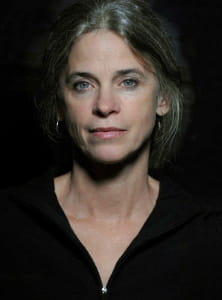
Mann is passionate about horses: "When I ride, especially the fast-flowing-as-one with the galloping horse on the mountain trails [...] I feel a freedom like no other. It's basic and primitive and in no way relates to the life of my mind or of my aesthetic sensibility". However, in 2006, she suffered a serious injury when her Arabian horse suffered an aneurysm while she was riding him, and in the tumult, she was dismounted. The stricken horse then fell on top of Mann, breaking her back. She spent the next two years in recovery, during which time she produced several ambrotype self-portraits. A second film, (this time feature length), What Remains, was an Emmy Award nominee in the 2008 Best Documentary category and the Jury Award winner at the Atlanta film festival in the same year.
In 2011, Mann presented a lecture series titled "If Memory Serves" for the William E. Massey, Sr. Lecture in the History of American Civilization, and worked on her memoir, Hold Still, which was published in 2015. The book became a New York Times bestseller and won the 2016 Andrew Carnegie Medal for Excellence in Nonfiction. But tragedy struck the Mann family again in the same year when (her son) Emmett took his own life. Mann spent several months at home in a state of shock.
Since then, Mann has made great strides in processing her grief, and returned to work, most recently exploring issues related to race relations and the history of slavery in the American South. She and Larry still live in Lexington (in the home they built together on her family's farm). Art critic Richard B. Woodward, who has visited the Mann household, writes, "Ex-'dirt hippies' who still grow much of their own food and until a decade and a half ago barely made enough money to pay taxes, Sally and Larry Mann are a tight couple". In 2020 Mann was recipient of The Centenary Medal from the Royal Photographic Society (UK) "in recognition of a sustained and significant contribution to the art of photography".
The Legacy of Sally Mann
Art critic Richard B. Woodward states that "[Mann's] work embodies several antithetical trends in contemporary photography. By locating her material in the lives of her own family, Mann belongs among the confessional documentarians, like Tina Barney and Larry Sultan. But the construction of her photographs as fiction rather than fact, with a moody narrative linking the images, puts her in a camp with Cindy Sherman and the post-modernists. And finally, the antique look of the prints - the vignetting, shallow depth of field, blurred edges and general languor - connects her to neo-pictorialists like Bruce Weber and the Starns. Like them, she depends as much on evocation as description".
The controversy surrounding her pictures of naked and semi-naked children placed her at the center of discussions regarding art and indecency, concurrent with the so-called "culture wars" of the 1990s, and subsequent legal cases that have targeted the photographer Jock Sturges (whose images of naked children on a nude beach in France were confiscated by the F.B.I. in 1990), and artists such as Andres Serrano, David Wojnarowicz, and Robert Mapplethorpe, whose works have all been condemned as obscene and/or sacrilegious by conservative and religious groups. But writing in Time magazine, Reynolds Price was clear eyed enough to look beyond the controversies: "Few photographers of any time or place have matched Sally Mann's steadiness of simple eyesight, her serene technical brilliance, and the clearly communicated eloquence she derives from her subjects, human and otherwise - subjects observed with an ardor that is all but indistinguishable from love".
Influences and Connections

-
![Diane Arbus]() Diane Arbus
Diane Arbus -
![Richard Avedon]() Richard Avedon
Richard Avedon -
![Robert Rauschenberg]() Robert Rauschenberg
Robert Rauschenberg - Emmet Gowin
- Jim Goldberg
-
![Documentary Photography]() Documentary Photography
Documentary Photography - Family Portraiture
- Portraiture
- Landscape Photography
- Jessie Mann
- Len Prince
- Tina Barney
- Larry Sultan
-
![Documentary Photography]() Documentary Photography
Documentary Photography - Family Portraiture
- Portraiture
- Landscape Photography
Useful Resources on Sally Mann
- Hold Still: A Memoir with PhotographsOur Pick
- Sally Mann: At Twelve, Portraits of Young Women
- Immediate FamilyOur Pick
- Still Time
- What Remains
- Proud Flesh
